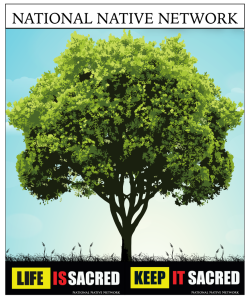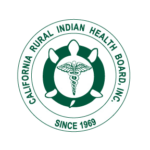
Tobacco and Cancer
Tobacco holds a sacred place among American Indians. It is a gift from the Creator. In California, tobacco is used in a variety of ways. It is used as an offering, and it may be offered to a fire in ceremony or with a prayer. Some offer tobacco when they take an animal or gather food or plant materials. Some offer tobacco as a sign of respect to an elder or visitors. It is also used as a medicine for several purposes. It is grown in a traditional way and used only for traditional purposes. Commercial tobacco (cigarettes, chew, snuff, and other commercial tobacco products) must never be used for traditional and sacred purposes.
Our ancestors recognized that tobacco can also cause harm. This harm is seen through the abuse of commercial tobacco. The smoking rate of American Indians and Alaska Natives in California is estimated at 27%. Commercial tobacco increases the risk of cardiovascular disease and diabetes. Commercial tobacco use causes several types of cancer. Illness and death from tobacco use is the number one preventable health program facing Indian Country and the world today.
Cancer is the number one leading cause of death of American Indians and Alaska Natives. There are several health disparities that can help lead to cancer. 90% of lung cancer is the result of smoking or exposure to second hand smoke. If smoking was eliminated, lung cancer could almost be eliminated. Women that smoke have a higher risk of developing cervical cancer. Prevention methods such as quitting smoking and HPV vaccinations at an early age, help prevent cervical cancer. With the increase in obesity and diabetes, liver cancer is quickly rising up the charts as one of the most common types of cancer. Proper nutrition, good diabetes management, and increased physical activity can help prevent liver cancer.
How CRIHB Can Help
In May 2014, the Centers for Disease Control and Prevention released a funding opportunity entitled “A Comprehensive Approach to Good Health and Wellness in Indian Country – financed solely by Prevention and Public Health Funding (CDC-DP14-1421PPHF14).” This opportunity was to offer support to prevent heart disease and prevent and manage type 2 diabetes and associated risk factors. There were two components to the opportunity. The California Rural Indian Health Board responded to Component 2 of the announcement to serve California.
The Advancing California Opportunities to Renew Native health Systems (ACORNS) overall project approach is comprised of two Phases. Phase I was conducted from 2014-2016 and consisted of assessing Tribal capacity of Tribes and Tribal Health Programs in California who were interested in creating social and built environments that support healthy living. A total of 39 Tribes and Tribal organizations representing 71 California Tribes conducted a health assessment and developed a community action plan. CRIHB worked with these participating communities to gather baseline data, establish a baseline of current capacity and identify gaps, create a program/action plan to address identified needs and to provide leadership, technical assistance, training and resources to increase the capacity of each community to implement Component 1 activities in years 2-5. The Community Action Plan (CAP) provides a clear direction for communities to focus on policies, systems and environment (PSE) strategies. CAP’s are used to plan local, population-based approaches to reduce the burden of chronic diseases most closely linked to physical inactivity, poor nutrition and tobacco use. This approach helps develop capacity and infrastructure for chronic disease prevention. In years 2-5, communities with completed assessments and action plans are able to apply for financial support from CRIHB to focus on policy, environmental and system (PSE) changes that influence the prevention and management of chronic diseases. This method of addressing chronic diseases fosters new partnerships between public health and community partners.
All Tribes in California are eligible to receive technical assistance even if they have not received financial support to implement Phase I or Phase II activities. CRIHB conducts regular trainings and provides technical assistance focused on sharing resources, grantee experiences and successes in overcoming challenges in programs via statewide updates, and strategies for completing PSE activities. Resources will also be available via the CRIHB website and social media. In years 2-5, CRIHB will continue to work with Tribes to improve collaboration with community, state, and federal partners. CTEC provides ongoing epidemiological and evaluation support to all Tribes and Tribal programs in California through this project. For more information on CTEC, please visit: https://crihb.org/ctec/.

Contact
Kathleen Jack
Research and Public Health
Deputy Department Director
kjack@crihb.org
916-929-9761 ext. 1502

